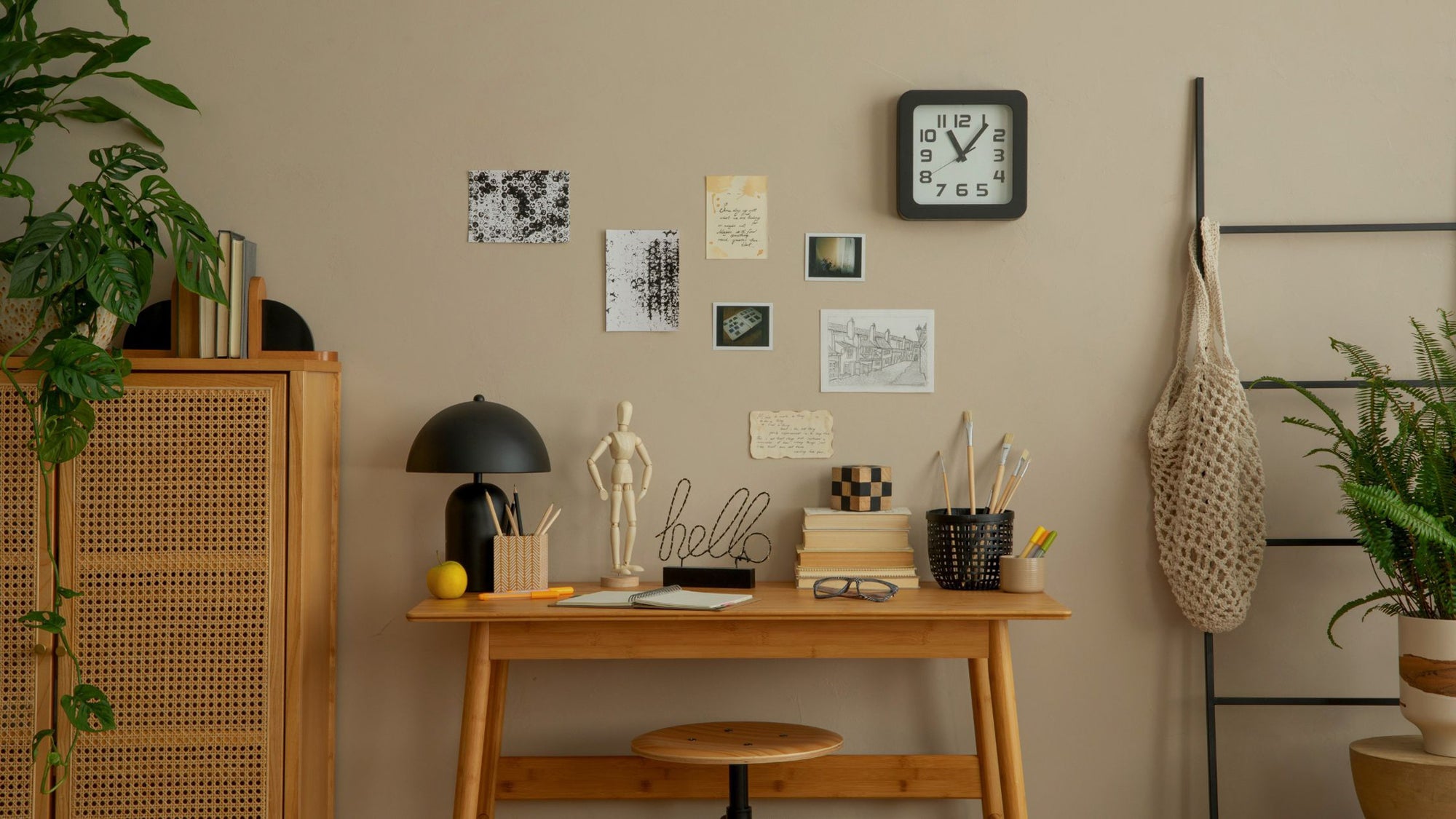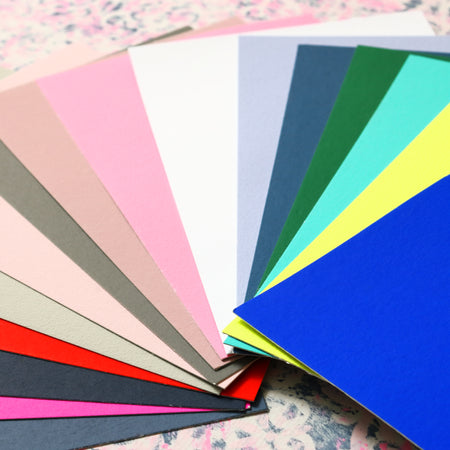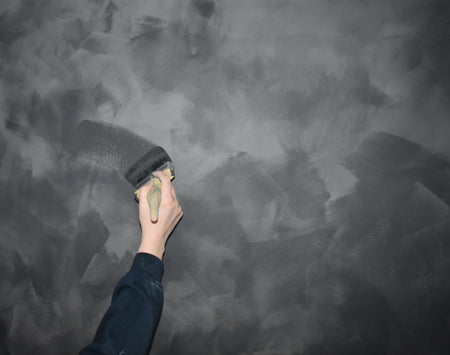Planning your Home Office Workspace

Over the past few years, many of us have changed the way we are working, with many starting to work from home. Unfortunately, not all of us have the luxury of having a separate room to use as an office, with many having to make do with the corner of the lounge, kitchen or even bedroom. So, what can we do to make these workspaces more appealing and productive so that you don’t migrate to the settee to watch the latest Netflix series or wash the dishes?
Colour
The colour of your proposed workspace can have a dramatic effect on focus, creativity, and productivity. Whether you plan to paint your wall in front of your desk, the whole room, your office furniture or hang colourful pictures, surrounding yourself with your favourite colours can have a positive effect on your mood and will attract you to the space.
If you are unsure about the colour to paint your workspace, get some swatches here and see which colour works best with the natural light of the room. You can use some low tack tape or bluetack to stick it to your wall or piece of furniture.
These are the shades we think will work well for your space:
- Greens are the colour of nature and quite unobtrusive allowing you to work calmly. We recommend trying a soft laurel green such as Verdant or subtle green such as Sage. These colours work extremely well with natural wood furniture.
- Pinks will help reduce your stress and soothe your mind, allowing you to work more efficiently. Madame de Pompadour is a dainty pink, whilst Albert Bridge is more of an old pink, both work fabulously with antique and modern furniture.
- Blue is known to increase creativity and productivity. Although it is mentally stimulating, it is also a colour of calmness. Although Morocco is a vibrant blue, it is an inspiring, yet motivational blue. Whilst Nightfall is a mysterious blue/black that will work perfectly in a room with a lot of natural light.
For an up-to-date look use blocks of colours or a geometric design to define your workspace.
Allocating a Workspace
Working on the dining room table might be okay for short periods, but this might not work long term. Consider your family and the type of work you are doing from home. If you are a mum with children currently off school, maybe a desk in the kitchen or lounge would be best for you so you can keep an eye on what they are up to. An alcove or under the stairs may be a good place to have a desk. Ideally try not to work in your bedroom as this should be an area you can escape to at the end of the day to rest. A garden room or conservatory, is idea as it will probably be quiet and you can set your desk to look out of the window rather than facing a wall. However, you might have to think about heating as these rooms can be cooler in the autumn/winter months. Other things to consider are lighting, power points and internet connection.
Furniture
A desk is the most important piece of furniture for working from home. This can be a fold away desk if you are working in the lounge or live in a small flat – the downside of this is that you will have to clear everything away at end of each day. You could consider a cupboard workstation which would fit against a wall and you just shut the doors when finished. Maybe you have a spare table that would suffice as a desk, you might even choose to paint it. A corner desk would give you plenty of working area for paperwork and your laptop, whilst a floating desk would work extremely well in a small alcove. You might need somewhere to put a printer or store files, try using an existing cupboard, sideboard or bookshelf to store them.
A comfortable chair is a must as you will be sat in it for many hours. You don’t have to pick a traditional office chair, there are plenty occasional chairs in the shops at the moment that will work well with existing décor or you might already have a chair that you could use. Just ensure that the seat is high enough to sit comfortably under your desk.
Of course, you could always buy second-hand furniture from a charity shop, Ebay and or Gumtree or beg and borrow furniture off family. Office furniture, similarly to any other furniture, can easily be upcycled with a quick coat of paint.
Accessories
Being at home you can make your workspace as personal as you like. Have fun with coloured accessories, pick brightly coloured boxes to hide clutter, pen holders, staplers, baskets etc. Hang your favourite pictures on the wall behind your desk. Motivational quotes prints are popular at the moment, hang a few around your work zone to inspire you. Bring the outdoors in by adding a few plants or a vase of flowers and don’t forget to add a desk lamp for additional lighting.
Just remember, when thinking about a home workspace, you are not designing a traditional office so you can be as free with colour and accessories as you like. You don’t have to always pick new, think of recycling and reusing, just ensure the area is functional.



